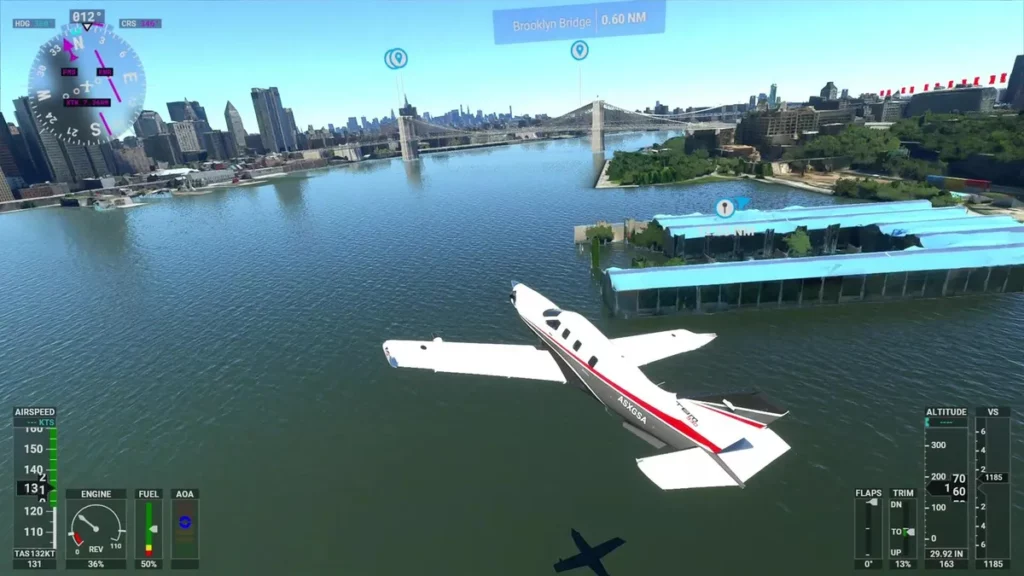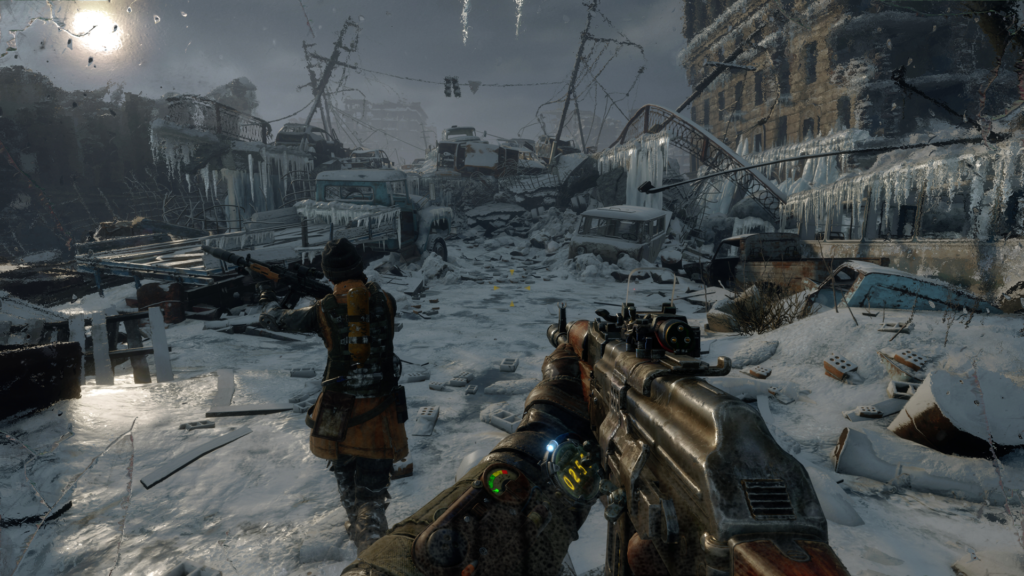Playing the latest and greatest games is always an exciting experience, but some games push the boundaries of not just gameplay but also graphical fidelity and technical excellence. These games are often the ones that demand the most from your GPU, showcasing stunning visuals, complex effects, and massive open worlds. So, what are the highest GPU-demanding games out there, and what makes them so intensive? Let’s take a detailed look and find out!
The Rise of Graphical Powerhouses
The demand for stunning visuals and immersive experiences is relentless. Gamers are always seeking that extra level of realism, smoother frame rates, and jaw-dropping graphical effects. This demand has driven the development of increasingly powerful hardware, with the GPU (Graphics Processing Unit) often taking center stage.
While CPUs handle a lot of the heavy lifting in terms of processing game logic and AI, the GPU is specifically designed to handle the complex and intensive task of rendering graphics.
As a result, certain games have emerged as true graphical powerhouses, leveraging the latest advancements in graphics technology to deliver breathtaking visuals.
These are the games that truly push the limits of your GPU, and they represent the forefront of gaming’s visual evolution.
So, let’s delve into the world of the highest GPU-demanding games and explore what makes them so remarkable and intensive.
Factors Affecting GPU Demand
Before we dive into the specific games, it’s important to understand the factors that contribute to a game’s GPU demand. This will give you a better idea of why certain games are more demanding than others and what developers are doing to create these visually stunning experiences.
1. Resolution and Texture Quality
The resolution at which a game is rendered has a significant impact on GPU demand. Higher resolutions, such as 4K, require a much greater number of pixels to be processed, putting more strain on the GPU. Additionally, the quality of textures used in a game can also affect demand. High-resolution textures with intricate details require more memory and processing power to handle.
2. Anti-Aliasing and Post-Processing Effects
Anti-aliasing techniques are used to smooth out jagged edges on objects, known as aliasing artifacts, which become more noticeable at higher resolutions. These techniques can be demanding on the GPU, especially more advanced forms like MSAA (Multi-Sample Anti-Aliasing) and SSAA (Super-Sampling Anti-Aliasing). Post-processing effects, such as depth of field, motion blur, and HDR lighting, also contribute to the GPU load.
3. Complex Shaders and Lighting
Shaders are small programs that run on the GPU, defining how a surface or object appears. They can simulate a wide range of effects, from realistic water reflections to intricate particle systems. The more complex the shaders, the higher the demand on the GPU. Similarly, advanced lighting techniques, such as global illumination and ray tracing, can significantly increase GPU usage.
4. Massive Open Worlds
Large and detailed open-world environments can be extremely demanding on the GPU. Rendering vast landscapes, intricate buildings, and a multitude of objects simultaneously requires significant processing power. The sheer amount of data that needs to be loaded and processed can push GPUs to their limits.
5. Number of On-Screen Objects
The number of objects rendered on-screen at once also affects GPU demand. Games with large-scale battles or dense urban environments, for example, will require the GPU to process a high number of objects simultaneously, taxing its capabilities.
Exploring the Highest GPU-Demanding Games
Now that we’ve discussed the factors that contribute to GPU demand, let’s explore some of the games that truly stand out in this regard. These are the titles that push the boundaries of graphical fidelity and set new benchmarks for visual excellence.
1. Cyberpunk 2077

The first entry on our list is the highly anticipated Cyberpunk 2077.
This game has become notorious for its demanding system requirements, and for good reason.
Set in a dense and vibrant futuristic city, Cyberpunk 2077 combines a massive open world with incredibly detailed environments and characters.
The game utilizes a range of advanced graphics technologies, including ray tracing for realistic lighting and reflections, as well as complex shaders to bring its cyberpunk setting to life.
One of the key factors that makes Cyberpunk 2077 so demanding is the level of detail in its world.
From the intricate neon-lit streets to the highly customizable character appearances, the game pushes the limits of texture and model complexity.
Additionally, the game features a range of post-processing effects, such as depth of field and motion blur, which further increase the load on the GPU.
As a result, even high-end GPUs can struggle to maintain high frame rates at higher resolutions, making Cyberpunk 2077 one of the highest GPU-demanding games available.
2. Microsoft Flight Simulator

Microsoft Flight Simulator is a game that truly showcases the power of modern GPU technology.
What sets this game apart is its incredible level of detail and scale.
The game aims to simulate the entire planet, allowing players to fly anywhere in the world and experience it in stunning detail.
This level of ambition naturally results in extremely high GPU demands.
The game utilizes a vast array of data, including satellite imagery and advanced algorithms, to generate its environments in real-time.
This includes not just the terrain but also accurately placed buildings, trees, and even traffic.
The level of detail extends to the aircraft themselves, with highly detailed cockpits and meticulously crafted 3D models.
The game also features a range of advanced graphics settings, including support for ultra-wide monitors, HDR lighting, and a range of post-processing effects.
As a result, Microsoft Flight Simulator is a true showcase of GPU power and one of the highest GPU-demanding games on the market.
3. Control

Control is a third-person action-adventure game that combines supernatural themes with intense combat and exploration.
What sets Control apart in terms of GPU demand is its extensive use of ray tracing and advanced lighting effects.
The game utilizes ray tracing for both reflections and global illumination, resulting in incredibly realistic lighting and dynamic shadows.
The use of ray tracing in Control is particularly notable as it goes beyond simple reflections on shiny surfaces.
The game employs ray-traced diffuse illumination, which accurately simulates how light bounces off surfaces, creating soft indirect lighting effects.
This, combined with other post-processing effects like depth of field and film grain, results in a visually stunning experience that pushes GPUs to their limits.
Additionally, Control features complex particle effects and detailed environments, further contributing to its high GPU demands.
4. Metro Exodus

The Metro series has always been known for its impressive graphics and demanding system requirements, and Metro Exodus continues this trend.
Set in a post-apocalyptic world, the game combines stunning outdoor environments with intricate indoor locations.
One of the key features that makes Metro Exodus a GPU-intensive game is its use of advanced lighting and atmospheric effects.
The game utilizes a range of techniques to simulate realistic lighting, including global illumination and volumetric lighting.
This results in dynamic and lifelike lighting conditions that change based on the environment and time of day.
Additionally, the game features complex atmospheric effects, such as fog and smoke, which are rendered with impressive detail.
Metro Exodus also supports ray tracing, further enhancing its visuals with realistic reflections and global illumination.
As a result, the game demands a lot from your GPU, especially if you want to experience it with all the graphical bells and whistles enabled.
5. Assassin’s Creed Valhalla

Assassin’s Creed Valhalla is a massive open-world game that takes players on a journey through the Viking Age.
The game features a vast and detailed map, spanning from the snowy mountains of Norway to the lush countryside of England.
One of the key factors that makes Assassin’s Creed Valhalla a GPU-demanding game is the sheer scale and detail of its world.
Rendering such a large and diverse environment, filled with intricate details and a multitude of on-screen characters, requires significant processing power.
The game also utilizes a range of advanced graphics technologies, including volumetric clouds, realistic water simulations, and complex particle effects for battles and environmental interactions.
Assassin’s Creed Valhalla also supports higher-end features like HDR lighting and ray tracing, further increasing the demand on the GPU.
As a result, players will need a powerful GPU to fully appreciate the game’s stunning visuals and smooth performance.
Optimizing Your Experience
Playing the highest GPU-demanding games doesn’t necessarily mean you need the absolute latest and most expensive hardware. There are a number of steps you can take to optimize your experience and get the most out of your current setup:
- Ensure your GPU drivers are up to date. Graphics card manufacturers regularly release updates that can improve performance and fix bugs.
- Tweak the in-game settings to find the right balance between visual quality and performance. Lowering certain settings, such as shadow quality or texture detail, can have a significant impact on performance without sacrificing too much visual fidelity.
- Consider lowering the resolution. Playing at a lower resolution can reduce the load on your GPU, resulting in higher frame rates. This is especially useful if your monitor supports resolutions higher than 1080p.
- Utilize adaptive resolution or dynamic resolution scaling. Some games offer these features, which automatically adjust the resolution based on the in-game demands, ensuring a smoother experience.
- Enable V-Sync if you’re experiencing screen tearing. However, this can introduce input lag, so it’s a trade-off between visual quality and responsiveness.
- Look into overclock
- into overclocking your GPU. This involves increasing the operating frequency of your graphics card to boost performance. However, it’s important to ensure your system has proper cooling and that you don’t exceed safe limits.
- Regularly clean your PC to prevent dust buildup, which can hinder performance by causing overheating.
- Close any unnecessary background applications to free up system resources.
- If you’re planning to upgrade, consider a higher-end GPU that can handle the demands of these games. Look for models with higher core counts, faster memory, and advanced features like ray tracing support.
What’s In Store For GPU-Demanding Games?
As technology continues to advance, it’s inevitable that games will become even more visually impressive and demanding. Here are a few trends and developments that will shape the future of GPU-demanding games:
- Ray Tracing Evolution: Ray tracing is still a relatively new technology in games, and we can expect to see it become more widespread and advanced. Future games may utilize ray tracing for more complex lighting scenarios, advanced reflections, and even sound propagation. This will result in even more immersive and lifelike visuals, but it will also demand more powerful GPUs.
- Higher Resolutions and Frame Rates: The push for higher resolutions will continue, with 4K becoming more common and 8K gaining traction. Additionally, there will be a growing focus on high frame rates, with more games targeting 120 FPS or even 240 FPS to deliver smoother and more responsive gameplay. This will require GPUs with higher processing power and faster memory bandwidth.
- Advanced Shaders and Effects: Developers will continue to innovate with shaders, creating increasingly complex and realistic effects. This could include more sophisticated particle systems, advanced physics simulations, and dynamic environments that react to player actions. These effects will demand more from GPUs, especially when combined with higher resolutions and frame rates.
- Virtual Reality and Augmented Reality: VR and AR technologies are becoming increasingly popular, and they require significant GPU power to deliver high-quality experiences. As these technologies advance, we can expect to see more games and applications that leverage VR and AR, demanding even more from graphics hardware.
- Cloud Gaming and Streaming: Cloud gaming services are already gaining traction, and they have the potential to revolutionize the industry. These services offload the graphical processing to remote servers, streaming the gameplay directly to players. This could reduce the demand for high-end GPUs in personal computers, as players would instead rely on the power of cloud servers.
Wrap!
Playing the highest GPU-demanding games is both a thrilling and challenging experience. These games push the boundaries of what’s possible, showcasing the incredible advancements in graphics technology. While they may require significant hardware power, the payoff is an immersive and visually stunning gaming experience.
As we’ve explored, there are a number of factors that contribute to GPU demand, from high resolutions and complex shaders to massive open worlds and advanced lighting effects. Developers are constantly raising the bar, leveraging the latest advancements to create breathtaking visuals and immersive gameplay.
If you’re an enthusiast seeking the ultimate graphical fidelity, investing in a powerful GPU will be a worthwhile endeavor.
Strike a balance between visual quality and performance, and there are always optimization techniques to help you get the most out of your hardware.
So, embrace the challenge and dive into the world of the highest GPU-demanding games. With each new release, you’ll be treated to stunning visuals, cutting-edge effects, and immersive experiences that showcase the incredible power of modern gaming hardware.
Keep your hardware updated, experiment with optimization settings, and above all, enjoy the beauty of these graphically intensive masterpieces.
Read also: